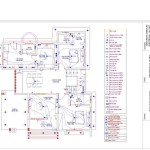Indoor Plants That Can Thrive in Small Pots with Limited Winter Sunlight in Georgia
Maintaining vibrant indoor plants during the winter months in Georgia requires careful consideration of several factors. Reduced sunlight hours, coupled with the typically drier air from indoor heating, present unique challenges. Selecting plant species that tolerate low light conditions and thrive in relatively small pots is crucial for successful indoor gardening during this period. The following article explores various plant options suitable for these specific conditions, focusing on their care requirements and adaptability to the Georgian winter environment.
The size of the pot plays a key role in the health and growth of indoor plants. Small pots restrict root development, limiting nutrient uptake and overall plant size. While some plants require repotting to accommodate their expanding root systems, others can flourish in smaller containers for extended periods. This is especially important for apartment dwellers or anyone with limited space who desires to bring some greenery into their homes. Choosing the correct pot size involves understanding the plant's mature size, root growth habits, and water retention needs.
Winter sunlight levels in Georgia are considerably lower than during the spring and summer. The sun's angle decreases, and cloudy days become more prevalent. Consequently, plants that require bright, direct sunlight may struggle to survive indoors. Opting for species that are naturally adapted to shaded environments or can tolerate low light conditions is essential for ensuring their survival and continued growth throughout the winter.
Selecting Low-Light Tolerant Plants
Numerous indoor plants are well-suited to low-light conditions. These species have evolved mechanisms to maximize light absorption and efficiently utilize available resources. Some popular choices include snake plants (Sansevieria trifasciata), ZZ plants (Zamioculcas zamiifolia), and peace lilies (Spathiphyllum wallisii). These plants are known for their hardiness and ability to tolerate neglect, making them ideal for beginner plant owners or those with busy lifestyles.
Snake plants, also known as mother-in-law's tongue, are particularly resilient and can survive in extremely low light environments. They require minimal watering, as their succulent leaves store water efficiently. Overwatering is a common mistake that can lead to root rot. The ZZ plant is another excellent option, boasting glossy, dark green leaves and a remarkable tolerance for drought and low light. It's important to allow the soil to dry out completely between waterings to prevent fungal diseases.
Peace lilies, while slightly more demanding than snake plants and ZZ plants, offer beautiful blooms that brighten up any indoor space. They prefer indirect light and consistently moist soil, but it's crucial to avoid overwatering. Signs of underwatering include wilting leaves, while yellowing leaves may indicate overwatering. Regular cleaning of the leaves with a damp cloth can help to improve light absorption and prevent dust buildup.
Plants Suitable for Small Pots
Several plant species are naturally compact and well-suited for growing in small pots. These include succulents, cacti, and certain varieties of herbs and flowering plants. Selecting plants that have slow growth rates and don't require frequent repotting is essential for maintaining them in small containers long-term.
Succulents, such as echeverias, haworthias, and sedums, are popular choices for small pots. Their water-storing capabilities make them relatively low-maintenance, and they come in a wide array of shapes, sizes, and colors. Cacti, similarly, are well-adapted to dry conditions and can thrive in small containers with well-draining soil. It's important to provide adequate light for succulents and cacti, even during the winter months. Supplement lighting may be necessary if natural light is insufficient.
Certain herbs, such as mint, chives, and parsley, can also be grown in small pots indoors. These herbs require bright, indirect light and regular watering. They can be a practical addition to any kitchen, providing fresh ingredients for cooking. Dwarf or miniature varieties of flowering plants, such as African violets (Saintpaulia ionantha), are also suitable for small pots and can add a touch of color to indoor spaces. African violets prefer bright, indirect light and consistently moist soil, but avoid getting water on the leaves, as this can cause spotting.
Caring for Indoor Plants During the Georgian Winter
Maintaining the health of indoor plants during the winter requires adjusting watering schedules, monitoring humidity levels, and providing adequate light. Overwatering is a common mistake during this period, as plants require less water when their growth slows down due to reduced sunlight. Allowing the soil to dry out slightly between waterings can help to prevent root rot and other fungal diseases.
Winter air tends to be dry due to indoor heating, which can negatively impact plant health. Increasing humidity around plants can help to alleviate this problem. This can be achieved by using a humidifier, placing plants on a tray filled with pebbles and water, or grouping plants together to create a microclimate with higher humidity. Misting plants regularly can also help to increase humidity, but it's important to avoid misting plants with fuzzy leaves, as this can lead to fungal growth.
Supplement lighting may be necessary during the winter months, especially if natural light is limited. Grow lights, which emit light in the spectrum that plants need for photosynthesis, can be used to supplement natural light and promote healthy growth. The duration and intensity of supplemental lighting will depend on the specific plant species and the amount of natural light available. It's important to position the grow lights at the appropriate distance from the plants to avoid burning the leaves.
In addition to watering, humidity, and light, it's also important to monitor plants for pests and diseases. Inspecting plants regularly for signs of infestation or disease can help to identify problems early and prevent them from spreading. Common pests that affect indoor plants include spider mites, aphids, and mealybugs. These pests can be controlled using insecticidal soap, neem oil, or other appropriate treatments. Fungal diseases can be prevented by providing good air circulation and avoiding overwatering.
Fertilizing indoor plants during the winter months is generally not necessary, as their growth slows down during this period. Over-fertilizing can lead to a buildup of salts in the soil, which can damage plant roots. If fertilization is necessary, use a diluted solution of a balanced liquid fertilizer. It's important to follow the instructions on the fertilizer label and avoid over-fertilizing.
Repotting plants during the winter is generally not recommended, as they are not actively growing during this period. Repotting can disrupt their root systems and cause stress. If repotting is necessary, wait until the spring when plants are actively growing. When repotting, use a well-draining potting mix and choose a pot that is only slightly larger than the previous pot.
Proper ventilation is crucial for maintaining the health of indoor plants. Stagnant air can promote the growth of fungi and other pathogens. Opening windows periodically, even during the winter, can help to improve air circulation and prevent the buildup of moisture. It's important to avoid placing plants near drafts or heating vents, as this can dry them out.
Choosing the right plants for the specific conditions in a home is essential for successful indoor gardening. By selecting low-light tolerant species that thrive in small pots and providing them with the appropriate care, it is possible to maintain a thriving indoor garden throughout the Georgian winter. Regular observation and timely adjustments to watering, humidity, and light levels are crucial for ensuring the health and vitality of indoor plants.

Success With Mixed Containers Using Perennial And Woody Plants Uga Cooperative Extension

Growing Indoor Plants With Success Uga Cooperative Extension

18 Plants Grown In Containers Nc State Extension Publications

Top 23 Houseplants For Apartment Living Apartmentguide Com

Four Low Maintenance Green Plants That Will Thrive In The Hot Georgia Sun Kelley Nan

10 Plants For Year Round Containers Fine Gardening

Potted Plants That Survive Winter Outside Pots Planters More

Plants That Grow In Water A No Fuss Way To Houseplants

Winter Houseplant Care Help Indoor Plants Thrive Joegardener

10 Plants For Year Round Containers Fine Gardening








